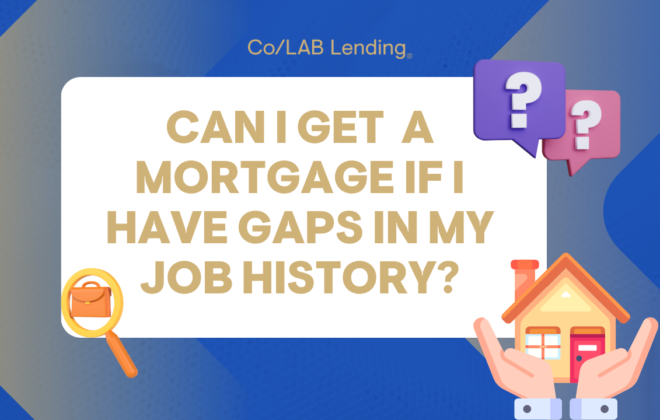Navigating Mortgage Approval with Student Loan Debt
Understanding Monthly Mortgage Payments with Student Loan Debt
Can I Get a Mortgage with Student Loan Debt? That is an excellent question—and you’re not the only one who is asking. According to Student Loan Hero, the average student in the class of 2016 graduated with about $37,172 worth of debt. Collectively, 44 million American borrowers have racked up $1.4 trillion in student loan debt.
While a proper education can give you a significant leg up when you enter the workforce, a college diploma does have its downsides. Student loan debt does affect (albeit indirectly) your chances of qualifying for a mortgage.
Can You Make a Monthly Mortgage Payment?
This question is really the bottom line for lenders. The first thing a bank is going to do is to look at your debt-to-income (DTI) ratio to determine whether or not a mortgage payment is possible for you.
Your DTI ratio is how much of your income goes towards paying off debts, rent, and whatever other financial obligations you may have. Obviously, the lower your DTI, the better chances you have of qualifying for a mortgage.
If you want to get a good idea of where you stand, the formula for DTI is simply:
Total monthly debt payments / gross monthly income
Borrowers analyze this ratio to decide how much of a risk you are as a potential candidate for a loan. If you’re buried in debt, they recognize that you have a high probability of defaulting on your loan.
It’s important to note that your DTI does not affect your credit score directly. What does affect your credit score, however, is your debt utilization ratio. This is your total available credit (between all of your credit cards) and how much of that you use up each month. If you’re swiping your cards at every store and living well above your means, it’s going to damage your credit score.
On the other hand, if you’ve been spending responsibly, or have at least turned over a new leaf, you should see a positive bump in your credit score.
Front-End vs Back-End Ratio: What It Means for You
The front-end ratio, or the housing ratio, is found by dividing your estimated monthly mortgage payments by your gross monthly income. Included in your projected mortgage rate is monthly principal, interest, taxes, and insurance (PITI).
For instance, the average household income in Pennsylvania is $53,599 according to the U.S. Census Bureau. That means that an individual would make about $4,467 dollars a month. That’s a nice chunk of change.
However, if your PITI comes to, say, $1,500 per month, the pendulum could swing pretty quickly.
1,500/4,467=.34
This equation shows that your front-end DTI is 34%. As a basic rule of thumb, mortgage brokers and lenders want your front-end DTI to be at a maximum of 28%. However, there are options for those with DTIs up to 35, 40, and even 50%.
On the other hand, the back-end ratio accounts for all of your financial obligations in comparison to your gross income. These debts include PITI, credit card debt, and you guessed it, student loans…
Here is how the average income would work out with the example we used above:
- You earn $53,599, or $4,467 dollars a month
- You’ve set up a responsible student loan payment of $350
- However, you’re spending a little beyond your means, so your PITI is still $1,500. Collectively, it comes to $1,850 a month.
This means your back-end ratio is $1,850/$4,467= 41%
Again, the lower the better. Banks and lenders like to see your back-end ratio at a maximum of 41%.
Don’t Panic: Navigating Mortgage Approval with Student Loan Debt
While the process of buying a home can feel hopeless when you have student loans to repay, all is not lost. Having a good credit score can work wonders. If your back-end DTI is lower than 50%, but you’ve taken care of your credit card bills, there are still options that will allow you to borrow.
There are also some quick ways to reduce your monthly DTI. If you’re making minimum payments on a credit card with a small balance, just bite the bullet and pay it off. By wiping out these little debts, you’ll achieve a big boost in the probability of getting qualified when they check out your back-end debt.
Nobody wants to give up their dream home, but downsizing can help too. Look for a less-expensive home so you borrow less and put more money down. You’ll save big time if you can make a 20% down payment.
The Impact of Student Loans on Mortgage Qualification
Student loans don’t necessarily affect your chances of qualifying. What does impact the probability of getting a loan is your DTI. At this point, you may be asking: what if I defer my loans?
Until recently, student loan debt that was deferred a year previous to closing wasn’t counted in a DTI analysis. Nowadays, however, 1% of that debt is still included in the formula.
The Role of a Broker in Your Mortgage Journey
With so many moving parts in finding the right mortgage option, it’s important that you talk to a mortgage broker who can give you the information you need to make a sound investment. If you’re right out of college, you should prepare yourself for the news that you may not be financially stable enough to buy a home at the moment.
On the other hand, if you’ve found a stable job and your credit is good, then you may be poised for qualification on a great option. Click here to contact Co/LAB Lending to see explore which loans may be right for you.
Mortgage Consultation Today!
Categories
- Credit (4)
- FHA Loans (3)
- Finances (3)
- First Time Home Buyers (6)
- Grab Bag (7)
- Home Technology (1)
- Homebuying Tips (17)
- Inspiration (1)
- Insurance (3)
- Interest Rates (3)
- Loan Process (1)
- Mortgage Financing (14)
- Motivation (1)
- News (1)
- Press Release (8)
- Renovation (2)
- Self Employed (1)
- Tips & tricks (1)
- Uncategorized (134)
- USDA Loans (1)
- VA Loans (2)




